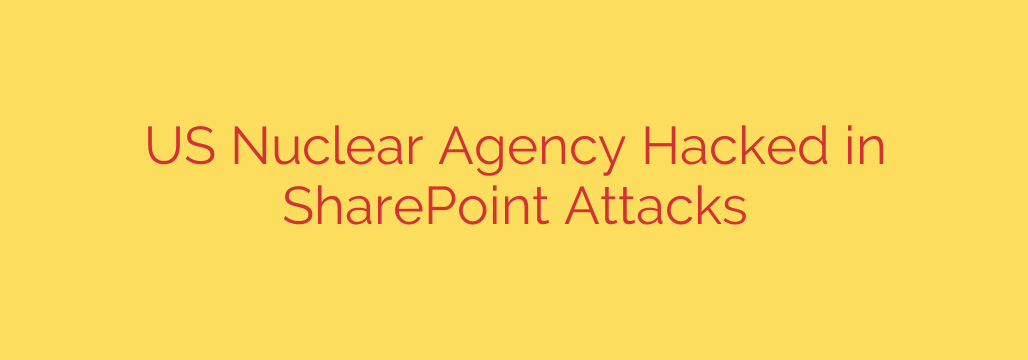
Major US Nuclear Lab Hacked: Sensitive Employee Data Leaked in SharePoint Attack
A significant cybersecurity breach has struck one of the United States’ foremost nuclear research facilities, the Idaho National Laboratory (INL). The attack, which did not compromise nuclear control systems, targeted the lab’s human resources servers, resulting in a massive leak of sensitive employee data.
The incident is a stark reminder that even the most secure and critical national infrastructure can be vulnerable through its supporting IT systems. Federal law enforcement, including the FBI and the Cybersecurity and Infrastructure Security Agency (CISA), are now investigating the breach.
The Anatomy of the Attack
A hacktivist group known as SiegedSec has publicly claimed responsibility for the cyberattack. The group successfully infiltrated the INL’s systems and exfiltrated decades’ worth of highly sensitive employee records.
The compromised information is extensive and deeply personal, reportedly including:
- Full names and birth dates
- Physical and email addresses
- Phone numbers
- Social Security numbers
- Employment information
- Sensitive banking and financial details
The breach affects thousands of individuals, including current employees, former staff, and even their spouses and children whose information was stored in the human resources system. The attackers subsequently leaked this stolen data online, dramatically increasing the risk of identity theft and financial fraud for all victims.
SharePoint Vulnerability: The Critical Entry Point
According to reports, the attackers gained access by exploiting a vulnerability in the lab’s externally facing SharePoint servers. SharePoint, a popular collaboration and document management platform, can become a significant security risk if not properly configured and consistently patched against known exploits.
This attack vector highlights a critical lesson for all organizations: a vulnerability in a supporting, non-operational system can serve as a gateway for a devastating data breach. While the lab’s core nuclear research and operational technology were not affected, the damage to its employees and institutional trust is severe.
In response to the attack, the INL has taken the affected systems offline and is working around the clock with federal partners to investigate the full scope of the breach. The laboratory has begun notifying affected individuals and is offering free, comprehensive credit monitoring services to help victims protect themselves from fraudulent activity.
Actionable Security Lessons for Every Organization
This high-profile breach offers critical cybersecurity lessons for businesses and government agencies alike. Protecting your organization from similar attacks requires a proactive and multi-layered security strategy.
Aggressive Patch Management: The most crucial defense is to promptly apply security patches to all software and systems, especially internet-facing platforms like SharePoint, VPNs, and web servers. Delays in patching create windows of opportunity for attackers.
Network Segmentation: Isolate sensitive systems from the rest of the network. An HR database containing Personally Identifiable Information (PII) should be heavily firewalled and segmented, making it inaccessible even if a less critical, public-facing server is compromised.
Implement Multi-Factor Authentication (MFA): Enforce MFA across all critical applications and user accounts. This simple step provides a powerful barrier against unauthorized access, even if login credentials are stolen.
Conduct Regular Security Audits: Don’t wait for an attack to find your weaknesses. Perform regular penetration testing and vulnerability scanning to identify and fix security gaps before malicious actors can exploit them.
Develop a Robust Incident Response Plan: Have a clear, tested plan for what to do in the event of a breach. This includes isolating systems, communicating with stakeholders, and working with law enforcement to minimize damage and recover quickly.
The Idaho National Laboratory data breach is a serious security incident with far-reaching consequences. It serves as a critical wake-up call, proving that in today’s threat landscape, cybersecurity is not just an IT issue—it’s an essential component of protecting your people, your data, and your mission.
Source: https://www.bleepingcomputer.com/news/security/us-nuclear-weapons-agency-hacked-in-microsoft-sharepoint-attacks/








